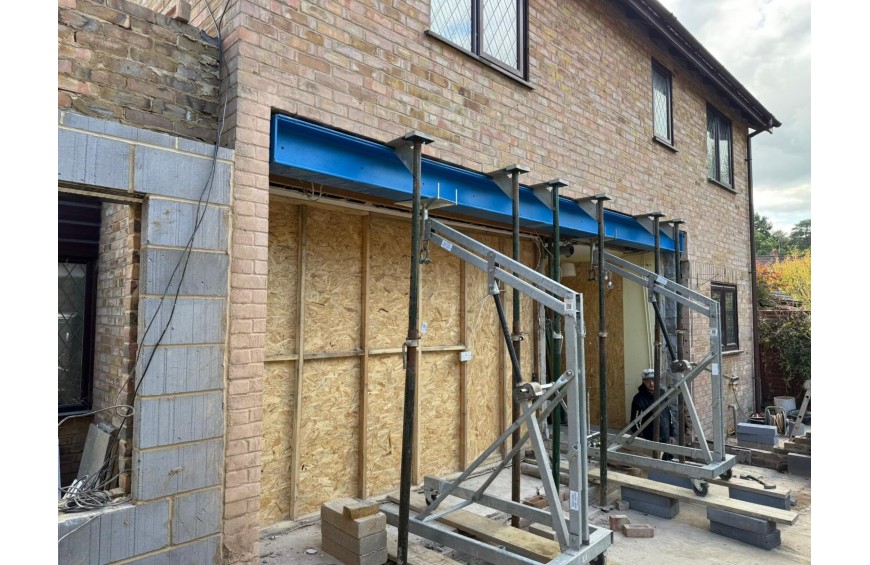Ordering a steel beam may seem straightforward — you get the size from your builder or engineer, place an order, and wait for delivery. But in practice, it’s easy to make costly mistakes that can delay your project or require expensive fixes. Here are the top five pitfalls homeowners, builders, and renovators should avoid when ordering a steel beam.
1. Ordering the Wrong Size
One of the most common mistakes is ordering a beam before you have the correct structural calculations. Steel beams aren’t “one size fits all” — even a small difference in span, load, or wall type can drastically change the beam size and weight.
Never rely on guesswork, online calculators, or advice from non-specialists. A beam that’s too small can sag or fail under load, while one that’s too large may not fit the space or could overload the supports. Always base your order on calculations from a qualified structural engineer.
Tip: Confirm that your engineer’s drawings clearly list the section size (e.g., 203 x 133 x 30 UB) and steel grade (typically S275 or S355).
2. Forgetting Padstones or Bearing Support
Even the strongest beam is only as good as what it sits on. Padstones (reinforced concrete blocks) or steel plates are used to spread the beam’s load into the wall below. Forgetting or underspecifying these can cause cracking, settlement, or even structural failure.
Make sure you check your engineer’s drawings for padstone size and material. Order them along with your beam, and confirm that the supporting wall or pillar is strong enough to take the load.
Tip: If the beam sits on a cavity wall, your engineer may specify a special detail to bridge the gap safely. Don’t overlook this.
3. Missing Structural Calculations or Building Control Approval
In the UK, removing a load-bearing wall or altering a structural element requires Building Control approval. Too often, people order beams before submitting calculations, hoping to “get it done quickly.” This approach can backfire — Building Control may reject unverified work, forcing you to redo or replace the beam.
Tip: Submit your engineer’s calculations and drawings with your Building Notice before installation. This ensures your work is compliant and avoids costly rework.
4. Not Planning for Delivery and Access
Steel beams are heavy, long, and awkward to handle. A 5-metre UB can weigh over 150 kg — far too heavy for two people to carry safely. Before ordering, make sure there’s clear access to the site and that delivery vehicles can get close enough.
If your property has limited access, narrow lanes, or no driveway, inform your supplier. Many companies can provide smaller delivery vehicles or cut the beam into bolted sections for easier handling.
Tip: Arrange lifting equipment or extra help for installation day. Don’t rely on improvised solutions — safety first.
5. Not Checking Finishes or Additional Requirements
When beams are exposed or installed in damp environments, they may need specific finishes such as red oxide primer, galvanising, or fire protection. Ordering a plain, untreated beam can lead to rusting or non-compliance with fire safety standards.
Likewise, make sure your beam has the right holes, plates, or fittings if it’s part of a larger structure. Retrofitting these later can be costly.
Tip: Always specify whether you need primer coating, fire protection, or custom fabrication when placing your order.
Final Thoughts
A steel beam is one of the most critical structural elements in any renovation or extension. Avoiding these five mistakes will save time, money, and stress — and keep your project compliant and safe.
Before placing an order, confirm your beam size with a structural engineer, ensure Building Control approval, check site access, and specify the correct finishes. If you’re uncertain, it’s worth speaking to an experienced supplier like Pratleys, who can review your details and help ensure your beam arrives right the first time.



Submit comment Cancel Reply